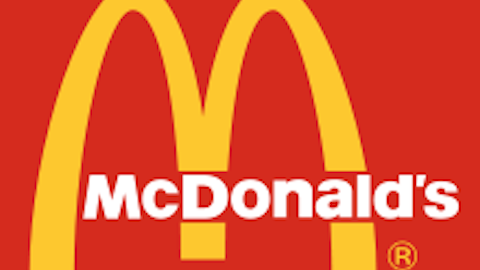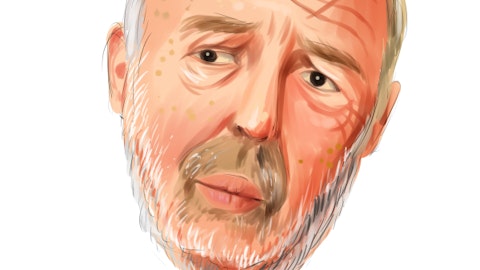CVS Caremark Corporation (NYSE:CVS) is the largest chain of drug stores in the U.S., with approximately 7,300 stores in 41 states, Puerto Rico, and Washington, D.C. For such an established company, CVS has done an excellent job of creating shareholder value. In fact, a more shareholder-friendly company is tough to find! With the company set to report earnings next Wednesday, I don’t foresee any major surprises; rather, we should see an affirmation of the company’s commitment to growth and its investors.

CVS is either the number one or two pharmacy chain in 73 of the 100 largest markets in the United States, and filled over 658 million prescriptions last year, representing a 20% share of the entire market. Pharmacy sales are CVS’ largest revenue source by far, accounting for 68% of sales, with OTC products contributing an additional 11%. In other words, all of the other “stuff” they sell at CVS (magazines, candy, groceries, photo services, etc.) only makes up 21% of the company’s sales.
The company is also the largest operator of retail health care clinics under its MinuteClinic brand. This is an area where the company foresees a lot of growth, since they have stated plans to open 100 new clinics a year for the next five years.
In addition to the growth the company plans to see from its MinuteClinics, the company plans to increase its presence in the largest U.S. markets. With the incredible presence of CVS, it may surprise some to know it has stores in 92 of the top 100 markets, leaving some room for expansion there.
The company also likes to grow through acquisitions. Most notably, CVS acquired Caremark Rx for $26.5 billion in 2007, Longs Drug Stores in 2008 for $2.9 billion, and most recently the UAM Medicare Part D business last year for $1.3 billion. These acquisitions are very significant because they have allowed CVS to enter markets it had not previously had a large presence in.
For example, when CVS acquired Longs it instantly made CVS the largest drug store chain in both California and Hawaii ,and greatly strengthened its presence in Arizona and Nevada.
As mentioned before, CVS has consistently increased its dividend for every year over the past decade (see below). Since 2003, the stock’s yield has increased from 12 cents per share to 90 cents currently. I would be very surprised if we did not see an increase for 2013.
Even more impressive than the dividend is the excellent record of buybacks. Since 2008, the company has reduced the amount of outstanding shares from 1.47 billion to 1.25 billion, a 15% reduction in 5 years. I would expect this trend of around a 3% reduction per year to continue for years to come.
Along with Walgreen Company (NYSE:WAG), CVS dominates the retail drug store segment. The third largest chain, Rite Aid Corporation (NYSE:RAD), is many times smaller than either company, making it barely a threat to either one. In addition, Rite-Aid is even forecast to go out of business or be taken over with its awful earnings numbers. They lost 64 cents per share in 2010 and 43 cents per share in 2011 (bear in mind the share price is just $1.56!). While the company is forecast to break even this year (zero earnings), I don’t really see how Rite-Aid even makes sense as an investment, except as a speculative play.
CVS currently trades for 15.2 times 2012 earnings, which I feel is more than reasonable considering their shareholder-friendly track record and ambitious growth plans. According to consensus estimates, 2012’s earnings of $3.40 per share will grow to $3.93 and $4.39 in 2013 and 2014, respectively, or by 15.6% and 11.7%, which I feel more than justifies the valuation.
Walgreen, on the other hand, trades at 18 times earnings, with a slightly lower annual earnings growth rate going forward, and the consensus calling for 10.8% growth. I should point out that Walgreen looks much better as a pure income investment. They have a similar track record to CVS when it comes to raising the dividend; however, the yield is a full percentage point higher, which is very significant to income investors.
Provided there are not any unforeseen surprises during next week’s earnings call, I would expect CVS to continue on its path of dominance in its sector. I would like to see a dividend increase this year, to somewhere in the neighborhood of $0.65 per share, as well as a continued buyback program. My favorite long-term investments are those that provide growth as well as income, and CVS does a pretty good job of both.
Just a thought, because I hear the critics getting ready: while a yield of just under 2% doesn’t exactly qualify it as an income stock, if the ambitious growth and buyback causes shares to increase fivefold again over the next decade, 2% of the share price will be a pretty significant amount of money!
The article CVS Caremark Earnings Preview: A Great Company For The Next Ten Years And Beyond originally appeared on Fool.com and is written by Matthew Frankel.
Copyright © 1995 – 2013 The Motley Fool, LLC. All rights reserved. The Motley Fool has a disclosure policy.





